How Do You Groom a Doberman (DIY Tips)
Grooming a Doberman is an essential part of maintaining their health and appearance. As a breed known for their sleek and elegant look, regular grooming not only keeps them looking their best but also promotes good hygiene and overall well-being.
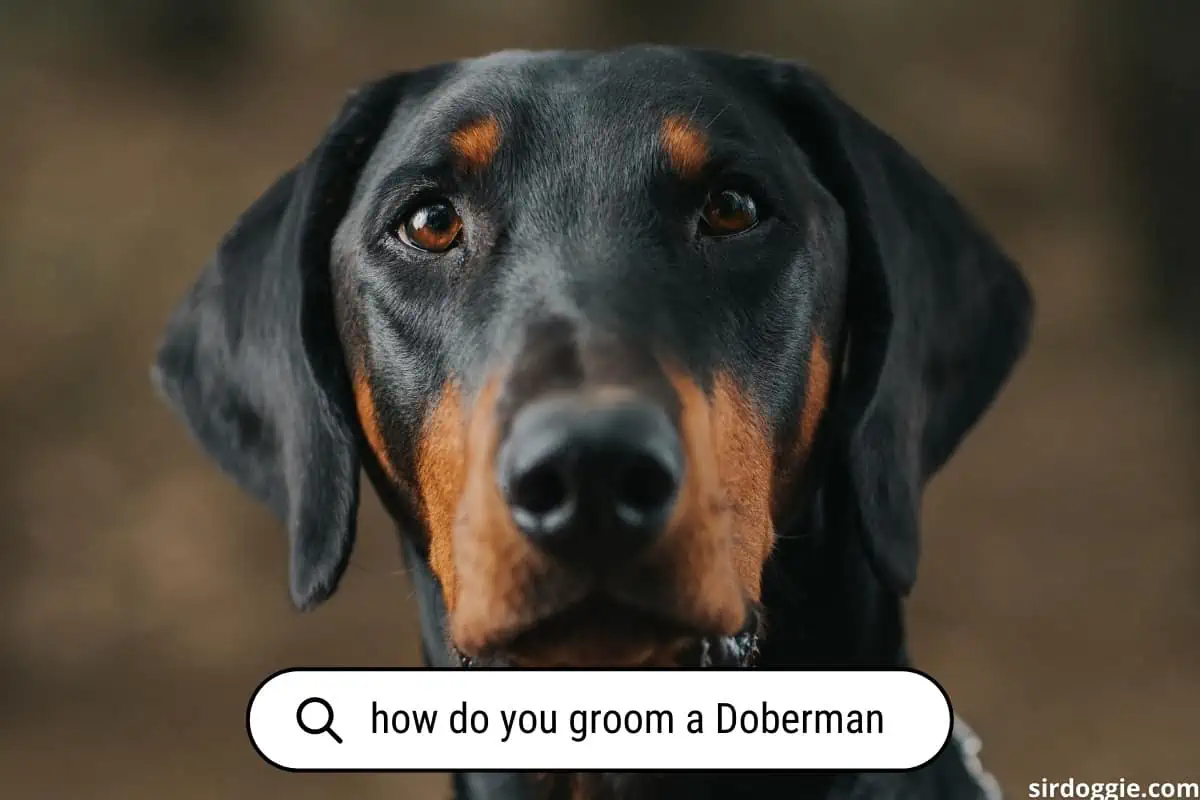
Throughout this article, we will discuss the steps and techniques necessary for properly grooming a Doberman, including coat care, nail trimming, and ear cleaning. Whether you’re a new Doberman owner or a seasoned dog parent, these tips and tricks will ensure your pet remains happy, healthy, and looking their best.
Let’s dive into the world of Doberman grooming and learn how to keep these incredible dogs looking and feeling their best!
Doberman Grooming: Frequency Guidelines
- Brushing: Weekly, using a grooming mitt or rubber curry brush to remove loose hair and maintain a healthy coat.
- Bathing: Every 1-2 months, or as needed, using a gentle dog shampoo to clean the coat without stripping natural oils (Tamu)
- Nail trimming: Every 3-4 weeks, or as needed, to prevent overgrowth and maintain comfort.
- Ear cleaning: Every 1-2 weeks, gently cleaning the outer ear to prevent buildup and infections.
- Teeth brushing: Daily or at least 2-3 times a week, using a dog toothbrush and dog-safe toothpaste to maintain oral health.
- Anal gland expression: As needed, checking with a veterinarian for guidance and proper technique.
- Check for skin issues: During regular grooming, inspect the skin for any irritation, redness, or abnormalities, especially in color-diluted Dobermans.
By following these guidelines, you can ensure your Doberman maintains a healthy coat, clean ears, and good overall hygiene. Regular grooming also provides an opportunity to check for any health concerns and deepen the bond between you and your Doberman.
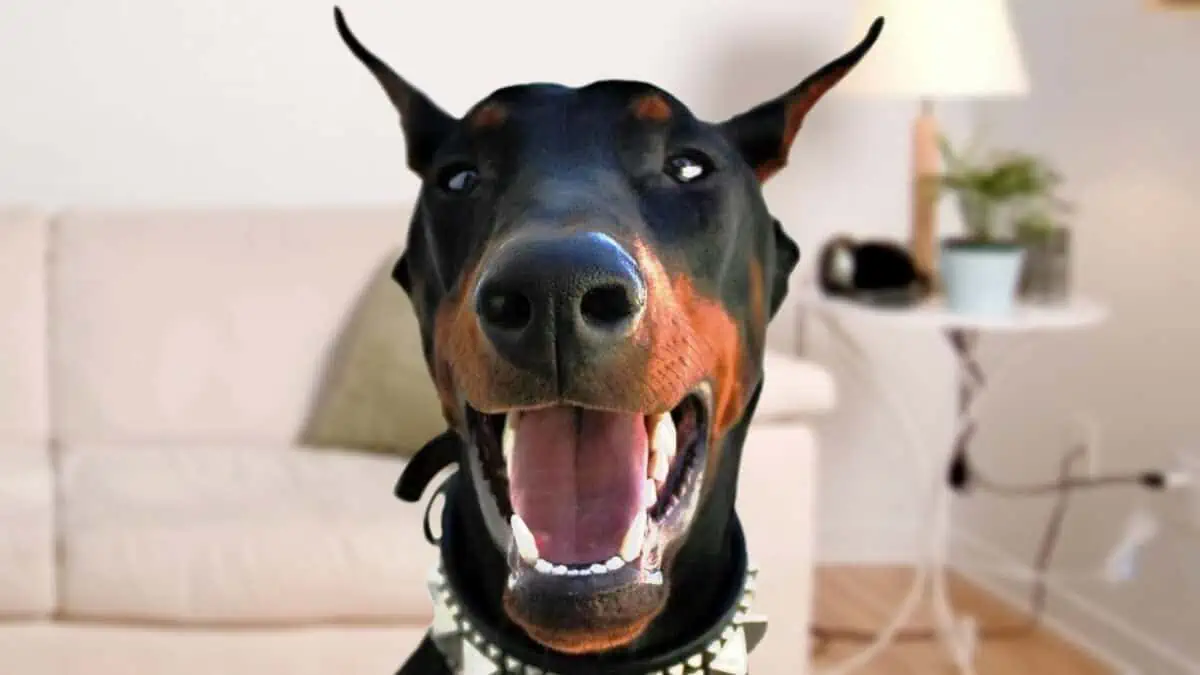
Understanding Doberman Coats
Did you know that Dobermans have a short and sleek coat? Let’s dive into the characteristics of their coats and grooming needs.
The Doberman’s coat comes in four main colors: black, red, blue, and fawn. It’s important to know your dog’s coat type in order to groom them effectively.
- Black: Most common color, deep black with rust markings.
- Red: Also known as brown, with rust markings.
- Blue: Dark grey coat with rust markings.
- Fawn: Light tan coat with rust markings.
Doberman coats are short, dense, and close-fitting to their bodies, leading to low maintenance in terms of grooming. But, how often should you groom your Doberman?
Generally, a weekly grooming routine is sufficient for most Dobermans. This can include brushing, nail trimming, and checking for skin issues. Since they have a short coat, shedding is minimal but still occurs, so regular brushing can help keep your home clean.
Essential Grooming Tools
When grooming a Doberman, it’s crucial to use the right tools to ensure a comfortable and effective process. So, what are the essentials?
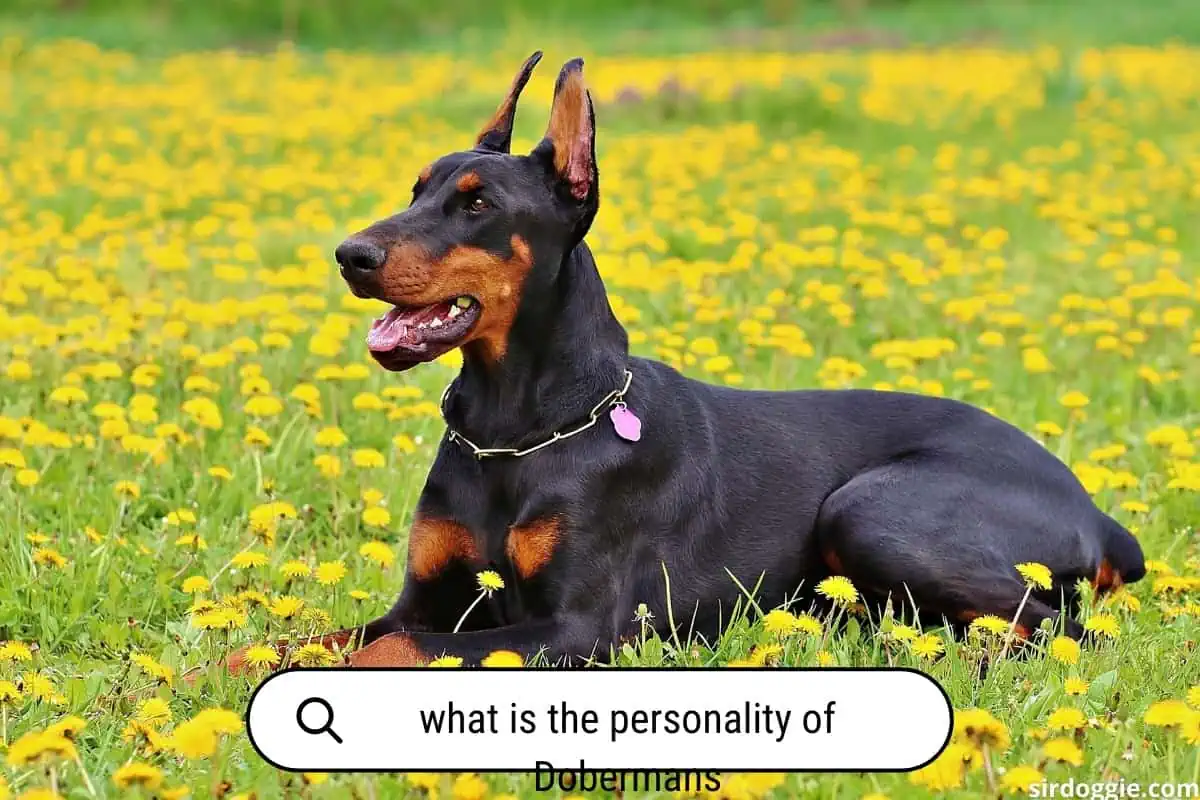
Here’s a list of must-have grooming tools for your Doberman:
- Brush: A bristle brush or a rubber curry brush works well for a Doberman’s short coat.
- Nail Clipper: Choose a high-quality clipper to trim your dog’s nails safely.
- Ear Cleaner: Use a dog-safe ear cleaning solution and cotton balls to keep their ears clean.
- Toothbrush and Toothpaste: Regular dental care is essential, so opt for a dog-specific toothbrush and toothpaste.
Now that you have the necessary tools, how should you use them? Keep reading to find out more about grooming techniques and best practices for Dobermans.
Regular Brushing Technique
How can you effectively brush your Doberman’s coat? Let’s dive into the proper technique for regular brushing.
Firstly, prepare the necessary tools:
- A slicker brush or a bristle brush
- A comb with both wide and narrow teeth
- Grooming gloves (optional)
Now, follow these easy steps:
- Stand your Doberman in a comfortable position, ensuring both you and your dog feel at ease.
- Begin brushing in the direction of hair growth, using gentle strokes with the slicker or bristle brush. Be careful not to apply too much pressure to avoid irritating your dog’s skin.
- Pay extra attention to areas like the neck, behind the ears, and under the legs, as hair tends to be thicker in these spots.
- Use the wide-toothed side of the comb to gently detangle any knots, then switch to the narrow-toothed side for a more thorough combing.
- If desired, finish by massaging your Doberman’s coat with grooming gloves to remove any remaining loose hairs and distribute natural oils.
By practicing this regular brushing technique, your Doberman’s coat will be clean, healthy, and shiny. Remember, consistency is key; aim for at least one brushing session per week.
Bathing and Coat Care

Bathing your Doberman is an important aspect of grooming. How often should you bathe your Doberman? A monthly bath is recommended to maintain a clean and healthy coat.
Before bathing, gather all supplies, such as:
- High-quality dog shampoo
- Soft towel
- Brush or comb
First, brush your Doberman’s coat to remove any loose hair and prevent tangles. While bathing, pay special attention to areas like the underarms, neck, and ears, where dirt and debris may accumulate. Rinse thoroughly to remove all shampoo residue.
After the bath, dry your Doberman with a soft towel, gently massaging the fur to help absorb moisture. Lastly, brush your Doberman’s coat again to maintain their sleek, short coat, accentuating their muscular build.
Caring for Ears and Teeth
How often do you clean your Doberman’s ears and teeth? Regular ear and dental hygiene is vital for your dog’s health. Let’s discuss the essentials of maintaining clean ears and teeth:
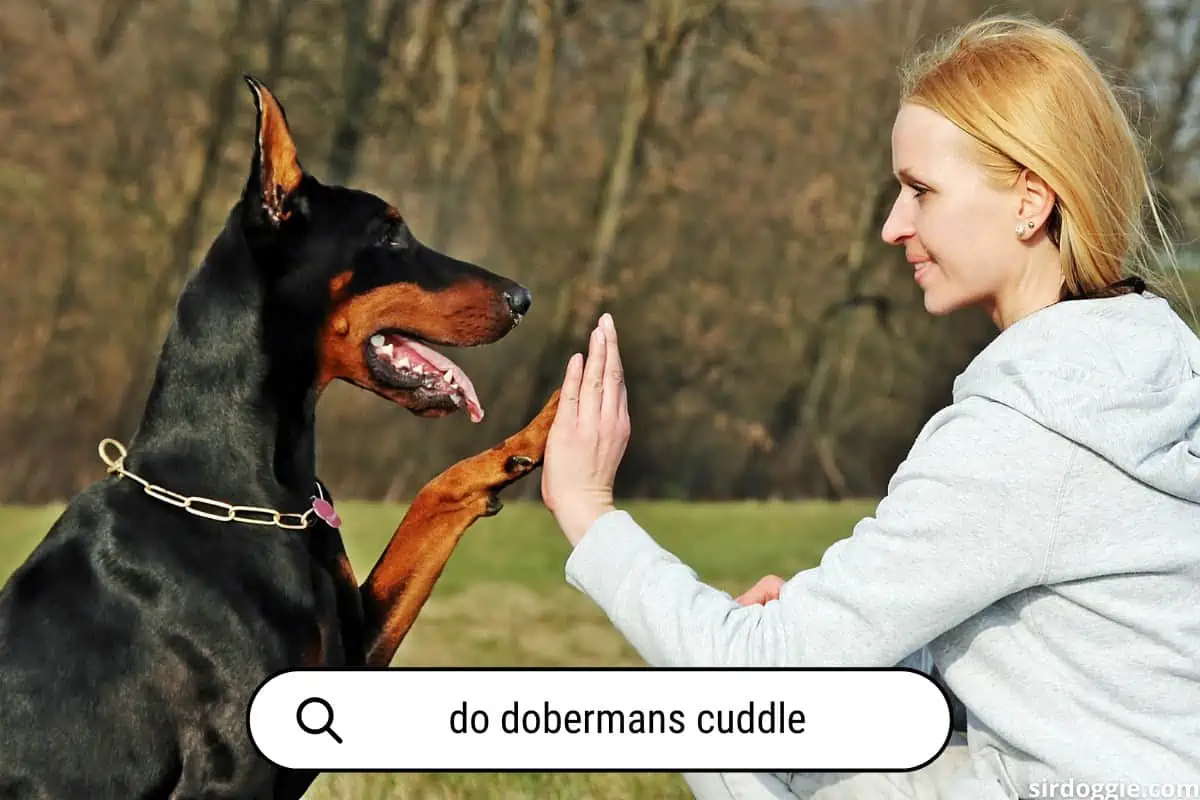
Ears:
- Doberman’s ears can be prone to infection due to their size and shape. Ensure you clean them once a week using a gentle pet ear cleaner.
- Use a soft cotton ball to wipe the outer ear canal without inserting it too deep. Never use cotton swabs as they can damage the inner ear.
- Keep an eye out for any signs of infection, such as redness, swelling, or foul odor, and consult your vet if you notice anything unusual.
Teeth:
- Dobermans are prone to plaque buildup, which can lead to gum disease and tooth loss. Brush their teeth at least 2-3 times a week using a small, soft-bristled toothbrush and pet-safe toothpaste.
- Provide dental chews or toys to help reduce plaque and keep their breath fresh. However, these should not replace regular brushing.
- Consider a routine dental check-up with your vet to ensure their teeth remain healthy and address potential issues early on.
Remember, prevention is better than cure. A proactive approach to your Doberman’s ear and teeth care will ensure they stay healthy and comfortable, and you’ll avoid costly veterinary bills in the long run.
Nail Care and Paw Maintenance
How often do you check your Doberman’s nails and paws? Regular nail care and paw maintenance are essential for your dog’s well-being.
First things first, invest in a good quality nail clipper specifically designed for dogs. Having quality tools makes the grooming process easier for both you and your Doberman.
- Inspect nails weekly: Doing so will help to detect any issues such as cracks, splits, or overgrowth.
- Clip the nails: Trim your dog’s nails every 2-4 weeks or as needed depending on their growth rate. Make sure to avoid cutting the quick, which can lead to bleeding and pain.
- File them down: Use a nail file to smoothen any rough edges after clipping, providing extra comfort for your dog.
Now, let’s not forget about their paws!
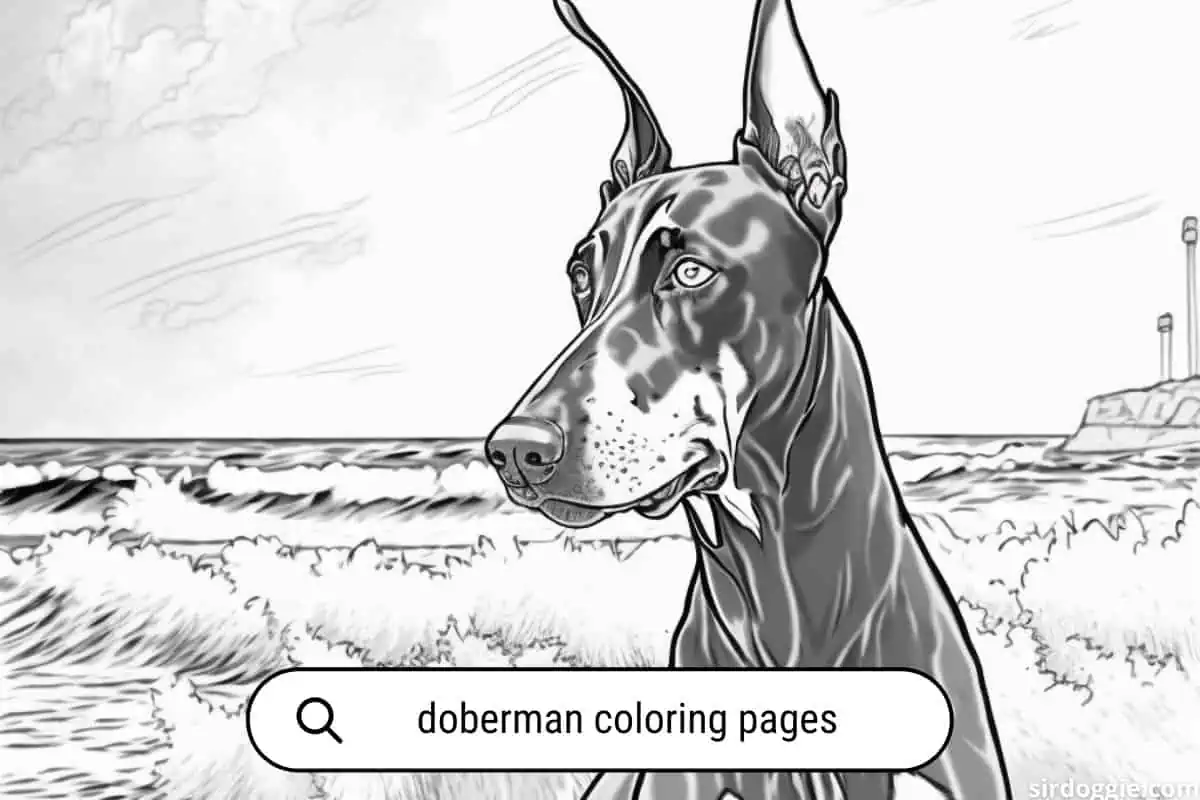
| Paw Care Tips |
|---|
| Regularly check for cuts, sores, or foreign objects lodged between their toes. |
| Keep their paw pads clean and dry to avoid infections. |
| Apply a paw balm or wax as needed to protect and moisturize their paw pads. |
And there you have it – simple steps for nail care and paw maintenance. Remember, a well-groomed Doberman is a happy Doberman!
Addressing Common Skin Issues
Dobermans, like any breed, can suffer from skin issues. Regular grooming can help you detect and address them early on. What are some common skin issues to look out for?
- Allergies: Caused by food, environment, or chemicals, resulting in itching, redness, and hair loss.
- Folliculitis: Inflamed hair follicles caused by bacteria, leading to bumps and scabs.
- Seborrhea: Excessive flaking or scaling of the skin, which can be oily or dry.
So how can you prevent and treat these skin issues in a Doberman? Here are some steps:
- Use a gentle, hypoallergenic shampoo to reduce irritation and soothe the skin.
- Limit bathing to once a month, unless advised otherwise by your veterinarian.
- Brush your Doberman regularly, focusing on areas with thicker fur, to remove dead hair and distribute natural oils.
- Watch for signs of skin distress during grooming and consult a veterinarian if you notice any issues.
Finally, maintain a healthy diet and environment for your Doberman to support their overall skin health.
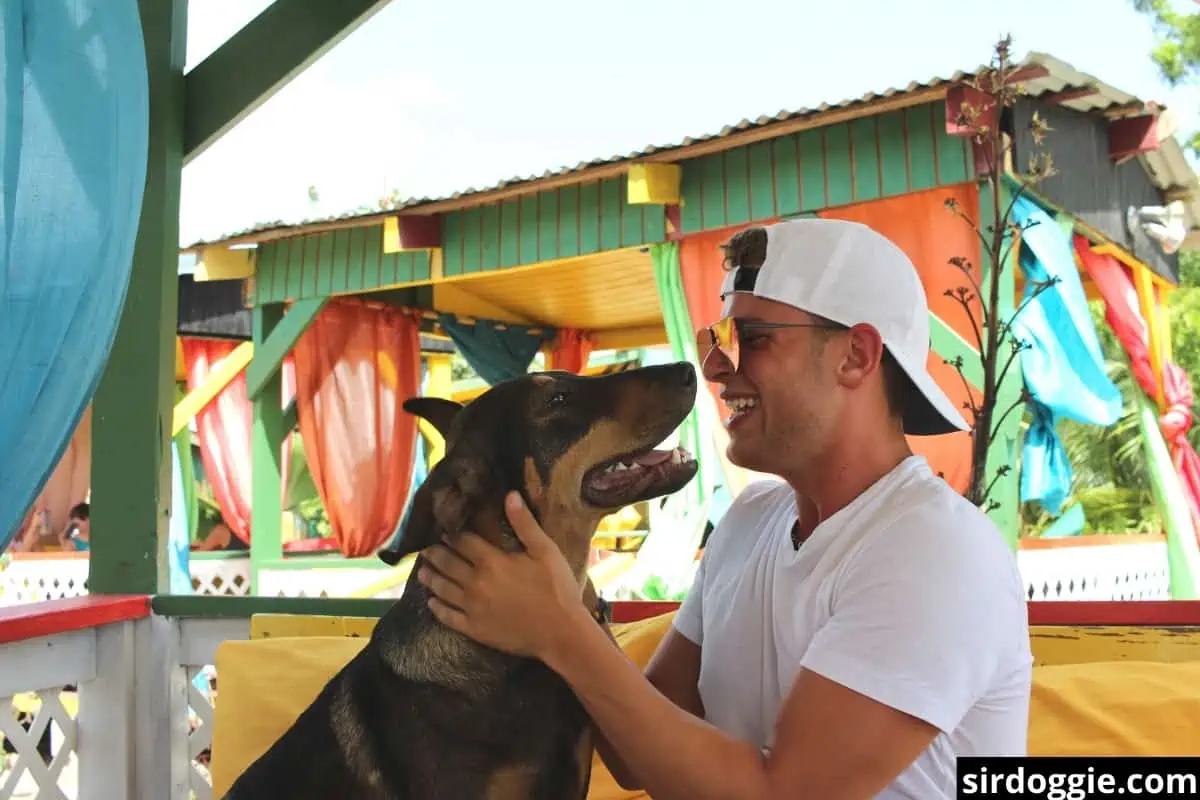
Tips for Grooming a Nervous Doberman
Does your Doberman show signs of nervousness during grooming sessions? Don’t worry, here are some practical tips to help you groom a nervous Doberman effectively:
- Introduce grooming tools gradually: Familiarize your dog with each tool one at a time. Let your dog sniff and explore them before using them on its body.
- Choose a quiet, comfortable location: Pick an area in your home where your dog feels safe and is free from loud noises or distractions.
- Use soothing words and positive reinforcement: Speak to your dog in a calm, reassuring tone while grooming. Reward your dog with treats or praise to associate grooming with positive experiences.
- Keep sessions brief: Keep grooming sessions short, especially during the initial stages. Gradually extend the duration as your dog becomes more comfortable.
- Maintain a gentle and slow approach: Be patient and gentle when handling your nervous Doberman. Avoid sudden movements or forceful actions.
These tips can make grooming a more enjoyable experience for both you and your nervous Doberman, helping to build trust and forge stronger bonds.
Professional Groomer Considerations
Why should you consider a professional groomer for your Doberman? A professional groomer is equipped with the knowledge and tools to provide the best care for your pet. They have specific techniques and specialized tools to efficiently groom your Doberman.
What are some services offered by professional groomers? Services typically include:
- Bathing
- Brushing
- Trimming nails
- Cleaning ears
- Teeth cleaning
How can you choose the right groomer for your pet? It’s essential to vet potential groomers and ensure they have experience and training working with Dobermans. Feel free to ask for references and check online reviews. A good groomer will also ask you important questions about your pet’s breed, age, and grooming history.
When is it best to consult with a professional groomer for your Doberman? While regular home grooming is essential, there are times when relying on a professional groomer can be beneficial, such as:
- Handling sensitive areas, like ears and paws
- When your Doberman requires a thorough grooming session
- Managing matting or shedding issues
- Addressing health concerns such as skin irritations
By keeping these considerations in mind, you can make the best decision for your Doberman’s grooming needs.

Family Dog Expert Author
Hi there! I’m Stuart, a devoted dog lover and family dog expert with over a decade of experience working with our furry companions. My passion for dogs drives me to share my knowledge and expertise, helping families build strong, loving bonds with their four-legged friends. When I’m not writing for SirDoggie, you’ll find me hiking, playing with my beautiful dog, or studying music.